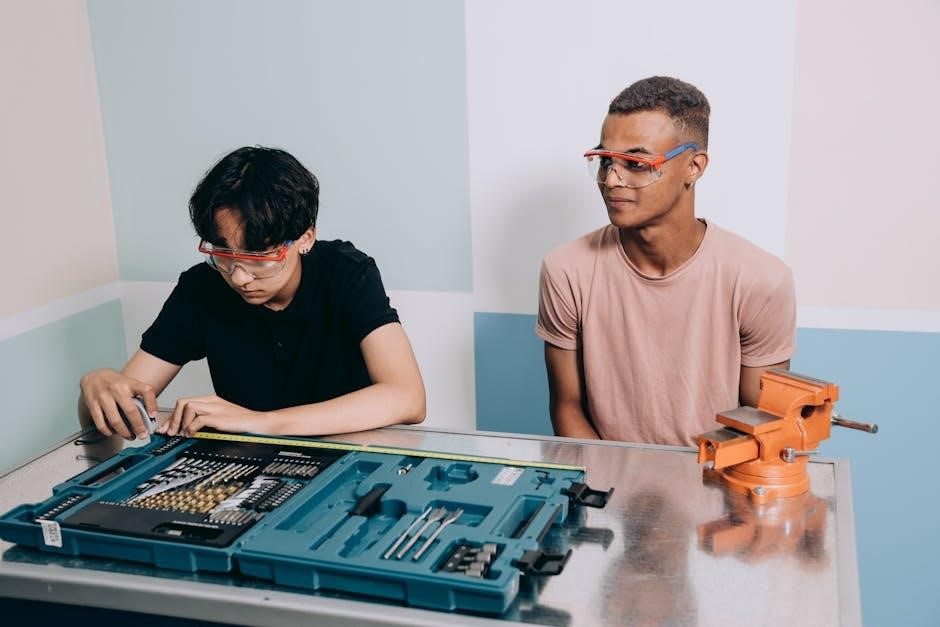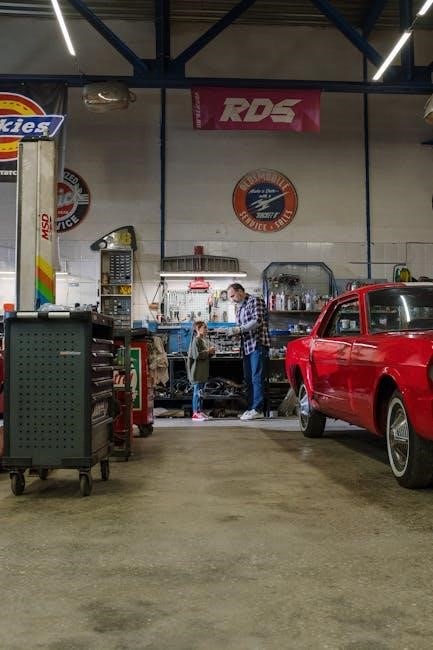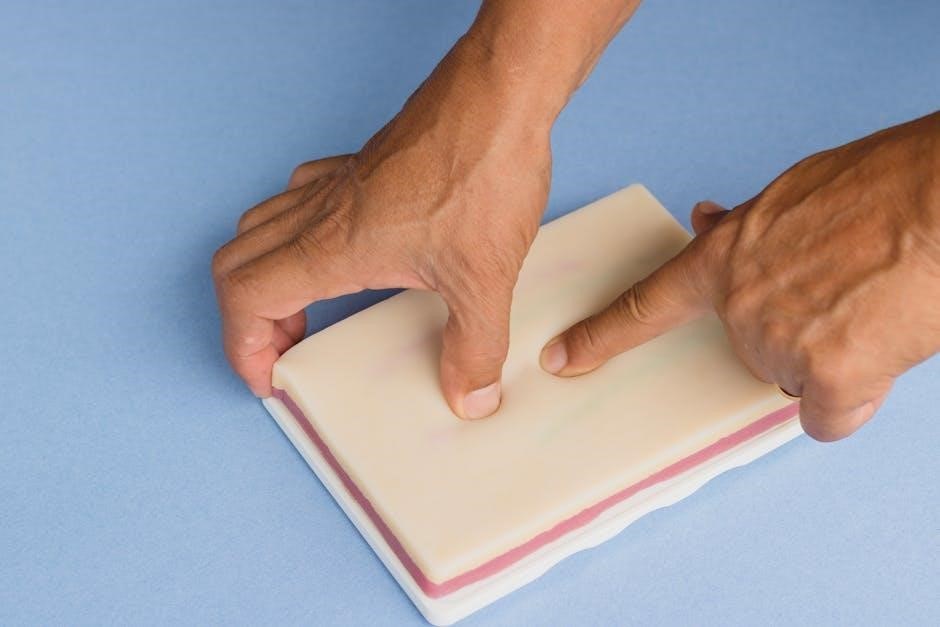Mirro Pressure Canner Instruction Manual: A Comprehensive Guide
Welcome to your comprehensive resource for understanding and using your Mirro pressure canner! This guide will walk you through everything from identifying your model to accessing manuals and recipes. Proper usage ensures safe and effective canning of low-acid foods. Get ready to master pressure canning with Mirro!
Mirro pressure canners have a long-standing reputation for their reliability and effectiveness in home food preservation. These canners allow you to safely process low-acid foods like meats, poultry, and vegetables, ensuring they are free from harmful bacteria like Clostridium botulinum. They offer a convenient solution for preserving garden-fresh produce and creating shelf-stable meals.
Understanding the basics of pressure canning is crucial for ensuring food safety and preventing spoilage. Mirro canners operate by creating a high-pressure, high-temperature environment that effectively eliminates harmful microorganisms. This process requires careful attention to detail, including proper venting, pressure maintenance, and cooling procedures.
Before using your Mirro pressure canner, it’s essential to familiarize yourself with its components and safety features. This manual will guide you through the process, providing step-by-step instructions and helpful tips to ensure successful and safe canning. Whether you’re a seasoned canner or a beginner, this guide will empower you to confidently use your Mirro pressure canner for years to come.
The information provided is based on available resources and manuals, offering insights into both older and newer Mirro models. Always prioritize safety and follow USDA guidelines for safe canning practices.
Key Features of Mirro Pressure Canners

Mirro pressure canners boast several key features that contribute to their popularity and effectiveness in home canning. One notable aspect is their durable aluminum construction, which ensures even heat distribution and efficient pressure building. This design promotes consistent processing temperatures, crucial for safe food preservation.

The canners typically include a sturdy lid with a secure locking mechanism to maintain a tight seal during operation. This seal is essential for achieving and maintaining the desired pressure level. A pressure regulator or weight is used to control the internal pressure, allowing for precise adjustments based on the type of food being processed.
Many Mirro canners come equipped with a dial gauge or a weighted gauge, providing visual indication of the internal pressure. This feature enables users to monitor the canning process and make necessary adjustments to maintain the correct pressure. Safety features, such as overpressure plugs, are also incorporated to prevent accidents.
Furthermore, Mirro canners are available in various sizes, catering to different canning needs. From smaller models suitable for individual use to larger ones designed for preserving large batches, there’s a Mirro canner to fit every requirement. These features, combined with their ease of use and maintenance, make Mirro pressure canners a trusted choice for home canning enthusiasts.
Safety Systems in Mirro Pressure Canners
Mirro pressure canners are engineered with multiple safety systems to ensure user protection during the canning process. These systems are designed to prevent accidents and injuries that can result from high-pressure cooking. Understanding these features is essential for safe and confident operation.
One primary safety feature is the overpressure plug, typically made of a rubber or silicone material. This plug is designed to release excess pressure if the canner exceeds its safe operating limit. This prevents potential explosions or damage to the canner.
The lid locking mechanism is another critical safety component. It ensures that the lid is securely sealed before pressure can build up inside the canner. This prevents the lid from being accidentally opened while the canner is pressurized, which could cause severe burns.

Many Mirro canners also have a vent pipe, which allows steam to escape and regulates the pressure inside the canner. It is crucial to keep this vent pipe clear of obstructions to ensure proper pressure control.
Additionally, the pressure regulator or weight plays a vital role in maintaining safe pressure levels. By accurately controlling the pressure, it prevents the canner from exceeding its maximum operating capacity.
Regularly inspecting and maintaining these safety systems is crucial. Check the overpressure plug for wear or damage, ensure the lid locking mechanism functions correctly, and keep the vent pipe clear. By understanding and maintaining these safety features, users can confidently and safely use their Mirro pressure canners.
How to Identify Your Mirro Pressure Canner Model
Identifying your Mirro pressure canner model is essential for accessing the correct instruction manual, finding replacement parts, and ensuring proper usage. The model number typically provides information about the canner’s capacity, features, and specific operating instructions.
The most common location for the model number is on the bottom of the canner. Look for a stamped or engraved number, often near other manufacturing information. This number may be accompanied by the canner’s capacity in quarts.
Another place to check is the lid. Some models have the model number stamped or printed on the inside or outside of the lid. Examine the lid carefully, paying attention to any markings or labels.
If you still cannot locate the model number, check the original packaging or any accompanying documentation. The model number should be listed on the box or in the instruction manual.
If you acquired the canner secondhand and lack the original packaging, try searching online using descriptive terms like “Mirro pressure canner aluminum” or “Mirro pressure canner 22 quart.” Comparing images and features to online results may help you identify the model.
Once you have the model number, you can search online for the corresponding instruction manual and replacement parts. Accurate model identification ensures you have the correct information for safe and effective canning.
Step-by-Step Instructions for Opening and Closing
Properly opening and closing your Mirro pressure canner is crucial for safe and effective operation. Incorrect procedures can lead to pressure leaks, damage to the canner, or even injury. Follow these step-by-step instructions carefully:
Opening the Canner:
- Ensure Pressure is Fully Released: Before attempting to open the canner, verify that all pressure has been released. This can be achieved by allowing the canner to cool naturally or by carefully using the pressure release valve. Never force the lid open if there is any residual pressure.
- Remove the Pressure Regulator: If you used a pressure regulator weight, remove it from the vent pipe.
- Check the Overpressure Plug: Ensure the overpressure plug has reset, indicating no internal pressure.
- Rotate the Lid: Depending on your model, rotate the lid counterclockwise or unlock the handles according to the manufacturer’s instructions. The lid should move freely without resistance.
- Lift the Lid: Carefully lift the lid away from you, tilting it slightly to allow any remaining steam to escape safely.
Closing the Canner:
- Inspect the Gasket: Before closing, examine the gasket for any cracks, damage, or debris. Replace the gasket if necessary.
- Position the Lid: Align the lid properly with the canner body, ensuring it sits flush and evenly.
- Secure the Lid: Rotate the lid clockwise or lock the handles according to the manufacturer’s instructions until it is firmly secured.
- Check the Seal: Ensure the lid is properly sealed by checking that the edges are aligned and the locking mechanism is engaged correctly.
Operating Instructions: Achieving and Maintaining Pressure
Achieving and maintaining the correct pressure inside your Mirro pressure canner is vital for safely processing food. Follow these instructions carefully to ensure proper operation and prevent potential hazards:
- Prepare the Canner: Place the canning rack in the bottom of the canner and add the amount of water specified in your recipe. This water creates the steam necessary for pressure canning.
- Load the Jars: Carefully load filled jars onto the rack, ensuring they do not touch each other or the sides of the canner.
- Close and Lock the Lid: Secure the lid according to the manufacturer’s instructions, ensuring a tight seal.
- Vent the Canner: Place the canner over medium-high heat. Allow steam to vent steadily from the vent pipe for 10 minutes to remove air and ensure proper pressure buildup.
- Apply the Pressure Regulator: After venting for 10 minutes, place the pressure regulator weight on the vent pipe.
- Monitor the Pressure: Watch the pressure gauge (if equipped) or listen for the regulator weight to jiggle or rock gently, indicating the desired pressure has been reached.
- Adjust the Heat: Once the desired pressure is reached, reduce the heat to maintain a steady pressure. Fluctuations can affect processing times and food safety.
- Maintain Pressure: Monitor the pressure throughout the canning process, adjusting the heat as needed to keep it consistent.
- Cool Down: After the processing time is complete, turn off the heat and allow the canner to cool naturally until the pressure returns to zero. Do not force the cooling process.
Proper Cleaning and Maintenance Procedures
Maintaining your Mirro pressure canner through proper cleaning and care is essential for its longevity and safe operation. Neglecting these procedures can lead to damage, corrosion, and potential safety hazards. Follow these guidelines to keep your canner in optimal condition:
- Cleaning After Each Use: After each canning session, allow the canner to cool completely. Then, disassemble the components, including the lid, sealing ring, pressure regulator, and vent pipe.
- Washing: Wash all parts with hot, soapy water. Use a non-abrasive sponge or cloth to avoid scratching the surfaces. Pay close attention to cleaning the vent pipe to remove any food residue or blockages.
- Sealing Ring Care: Inspect the sealing ring for cracks, brittleness, or damage. Replace the sealing ring if it shows any signs of wear. Store the sealing ring loosely on the lid or in a separate container to prevent it from stretching or deforming.
- Cleaning the Lid: Clean the lid thoroughly, paying attention to the safety valve and pressure gauge (if applicable). Ensure these components are free from debris and functioning correctly.
- Drying and Storage: Dry all parts completely before reassembling or storing the canner. Moisture can lead to corrosion and damage. Store the canner in a clean, dry place, away from extreme temperatures or humidity.
- Vent Pipe Maintenance: Regularly check the vent pipe for blockages. Use a small brush or wire to clear any obstructions. A blocked vent pipe can prevent proper pressure regulation and pose a safety risk.
- Inspection: Before each use, inspect the canner for any signs of damage, such as dents, cracks, or corrosion. Do not use the canner if it is damaged.
Troubleshooting Common Issues: Steam Leakage and Pressure Problems
Encountering steam leakage or pressure problems with your Mirro pressure canner can be frustrating, but often these issues can be resolved with simple troubleshooting steps. Here’s a guide to help you identify and fix common problems:
- Steam Leakage Around the Lid: This is often due to an improperly seated sealing ring. Ensure the sealing ring is clean, flexible, and correctly positioned in the lid groove. If the ring is old or damaged, replace it. Also, check the lid for any dents or damage that might prevent a tight seal.
- Failure to Reach or Maintain Pressure: This could be due to insufficient water in the canner. Always follow the recipe’s water level guidelines. Another cause could be a blocked vent pipe. Clean the vent pipe thoroughly. Lastly, ensure the heat source is adequate and the canner is properly sealed.
- Excessive Steam Release: A small amount of steam release is normal, but excessive steam indicates a problem. Check the pressure regulator to ensure it’s clean and functioning correctly. Also, verify that the vent pipe is not blocked, causing pressure to build up too quickly.
- Pressure Fluctuations: Inconsistent pressure can be caused by uneven heat distribution. Ensure the canner is centered on the burner and the heat is consistent. Avoid using burners that are too small or too large for the canner.
- Food Spillage: Overfilling the jars can cause food to spill during processing, leading to blockages and pressure problems. Always leave the recommended headspace in each jar.
If these troubleshooting steps don’t resolve the issue, consult the Mirro pressure canner manual or contact a qualified appliance repair technician.
Canning Timetables: Meat, Poultry, and Vegetables
Accurate processing times are crucial for safely canning meat, poultry, and vegetables in your Mirro pressure canner. These timetables ensure that harmful bacteria, like botulism spores, are destroyed during the canning process. Remember that processing times vary depending on the food, jar size, and altitude.
Important Considerations:
- Altitude Adjustment: If you live at an altitude above 1,000 feet, you’ll need to increase the pressure or processing time. Consult your Mirro manual or a reputable canning resource for specific altitude adjustments.
- Jar Size: Processing times differ for pint and quart jars. Always use the correct time for the jar size you’re using.
- Packing Method: Some foods require a hot pack (pre-cooked and packed hot), while others can be raw-packed. Follow the recommended packing method for each food.
- Headspace: Leave the recommended headspace in each jar (usually 1 inch for vegetables, poultry and meat) to allow for proper sealing.
General Guidelines:
- Meat and Poultry: Processing times typically range from 75-90 minutes for quarts, depending on the type of meat (beef, pork, chicken) and the cut.
- Vegetables: Processing times for vegetables vary widely, with some requiring as little as 20 minutes and others needing over an hour. Low-acid vegetables like green beans, corn, and peas require longer processing times.

Always refer to a current, reliable canning guide (such as the USDA Complete Guide to Home Canning) for specific processing times and pressures for each food. These timetables are guidelines only and should not replace official recommendations.
Finding Replacement Parts and Accessories
Maintaining your Mirro pressure canner in good working order is essential for safe and successful canning. Over time, certain parts may wear out or become damaged, requiring replacement. Fortunately, finding replacement parts and accessories for your Mirro canner is generally straightforward.
Common Replacement Parts:
- Sealing Rings/Gaskets: These are the most frequently replaced parts, as they ensure an airtight seal. Replace them if they become brittle, cracked, or no longer create a tight seal.
- Overpressure Plugs/Safety Valves: These safety devices release excess pressure. Replace them if they are damaged or malfunctioning.
- Vent Pipes/Weight Sets: These control the pressure inside the canner. Ensure they are clean and replace them if damaged.
- Lids and Handles: While less common, lids and handles can also be replaced if damaged.
Where to Find Parts:
- Online Retailers: Websites like Amazon, eBay, and specialty kitchenware stores often carry Mirro replacement parts. Search using your canner’s model number for the best results.
- Appliance Parts Stores: Local appliance parts stores may stock common Mirro replacement parts or be able to order them for you.
- Mirro Customer Service: Contacting Mirro directly or checking their website might provide access to parts and accessories.
Important Tips:
- Know Your Model Number: This is crucial for finding the correct parts.
- Use Genuine Mirro Parts: Whenever possible, use genuine Mirro parts to ensure compatibility and safety.
- Inspect Parts Regularly: Check your canner’s parts before each use to identify any potential issues.
Accessing Mirro Manuals and Recipe Resources
Having access to the correct instruction manual and reliable recipes is paramount for safe and successful pressure canning with your Mirro canner. Manuals provide essential information on operation, safety precautions, and troubleshooting, while tested recipes ensure proper processing times for various foods.
Finding Mirro Manuals:
- Mirro Website: Check the official Mirro website for downloadable manuals. They may have a section dedicated to legacy products where you can find older manuals.
- Online Archives: Websites like Appliance Factory Parts often host user manuals for various appliances, including Mirro pressure canners. Search using your model number.
- Third-Party Sites: Many websites dedicated to canning and food preservation offer links to scanned or transcribed Mirro manuals.
Recipe Resources:
- Manual Recipe Sections: Many Mirro manuals include a section with basic canning recipes.
- USDA Complete Guide to Home Canning: This is the gold standard for safe canning practices and includes tested recipes for various foods.
- University Extension Services: Local university extension services often provide canning workshops, resources, and tested recipes specific to your region.
- Reputable Canning Websites: Websites like the National Center for Home Food Preservation offer tested recipes and canning guidelines.
Important Considerations:
- Model-Specific Manuals: Always try to find a manual that matches your specific Mirro canner model.
- Tested Recipes Only: Only use recipes from reputable sources that have been tested for safety.
- Follow Instructions Carefully: Adhere to all instructions and processing times provided in the manual and recipe.
